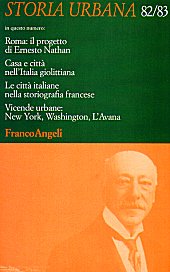Italian piazza e planning culture : esportazione di un prototipo, individuazione di un nodo disciplinare
117-142 p.
Il prototipo della piazza italiana ha esercitato una forte suggestione sulla cultura urbanistica nel contesto angloamericano e indirettamente ha portato l'avanguardia disciplinare a interrogarsi sull'essenza ultima della pianificazione. Le alchimie spontanee architettura-ÂÂsocietà insite in alcuni luoghi mettevano a nudo i limiti del progetto tecnico nella metropoli contemporanea. Camillo Sitte ha codificato e diffuso internazionalmente la grande lezione della "stanza a cielo aperto" all'italiana, alla fine dell'800. La piazza ha ispirato Civic Centres, soluzioni monumentali e progetti di rinnovo urbanistico basati sui bisogni delle comunità. Autori come Unwin, Hegemann, Gropius, Mumford, Lynch e Venturi ne hanno ripreso e sviluppato la linea, con riflessioni fondamentali sull'uso dei luoghi collettivi cittadini. In tutto questo la tradizione urbana italiana è stata puntualmente presa a riferimento e parallelamente contestata
È andata progressivamente in crisi l'idea di una sua esportabilità letterale come modello, ma mai del tutto quella di studiarne i principi organizzativi, né l'apprezzamento per le sue tipiche componenti di disegno spaziale, da ultimo banalizzate dalla diffusione dei centri commerciali. [Testo dell'editore]
The model of the Italian piazza had a strong influence on the culture of urban planning in the Anglo-American context, and indirectly led the disciplinary debate to question the ultimate nature of planning. Camillo Sitte codified and internationally disseminated the great lesson of Italian style "outdoor rooms" in the late 1800s. The piazza inspired civic centres, monumental arrangements and urban renewal projects based on community needs. Prominent authors such as Unwin, Hegemann, Giedion, Mumford, Lynch and Venturi followed and developed this line with fundamental reflections on the use of collective urban spaces. The Italian urban tradition was always taken as a reference and often challenged. The spontaneous alchemy between architecture and society inherent in some places revealed the limits of technical design in the contemporary metropolis
The idea of the literal exportability of the piazza as a prototype has been definitively questioned, but never the study of its organising principles, nor the appreciation of its typical components of spatial design (which have recently been trivialized by the proliferation of shopping centres). [Publisher's text]
-
Articles from the same issue (available individually)
-
Information
ISSN: 1972-5523
DISCIPLINES
KEYWORDS
- Pianificazione urbana Italian Piazza Civic Centres Spazi pubblici Townscape Rinnovamento urbano
- Urban Planning, Italian Piazza, Civic Centres, Public Space, Townscape, Urban Renewal


